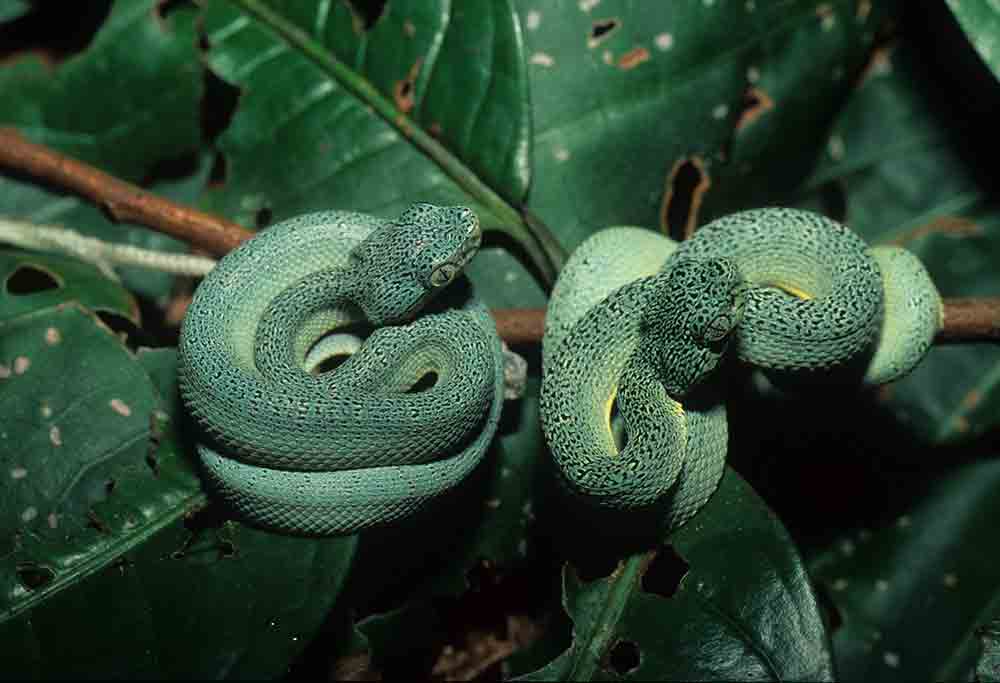In the 1990s, during the heyday of printed herp care publications in the U.S., Dick’s name was a staple on the bookshelves and in magazines. Together
Dick Bartlett is an author, breeder, photographer and field researcher of reptiles, amphibians, as well as other forms of wildlife with more than 70 years of experience. In the 1990s, during what can be considered the heyday of printed herp care publications in the United States, Dick’s name was a staple on the bookshelves and in magazines. Together with his wife Patti, Dick has published more than 56 books, including 10 field guides. In addition, Dick has published several hundred magazine articles. REPTILES magazine writer Foster Reves recently communicated with Dick to kick off the first in an occasional interview with those who have contributed so much to reptiles and reptile keeping.
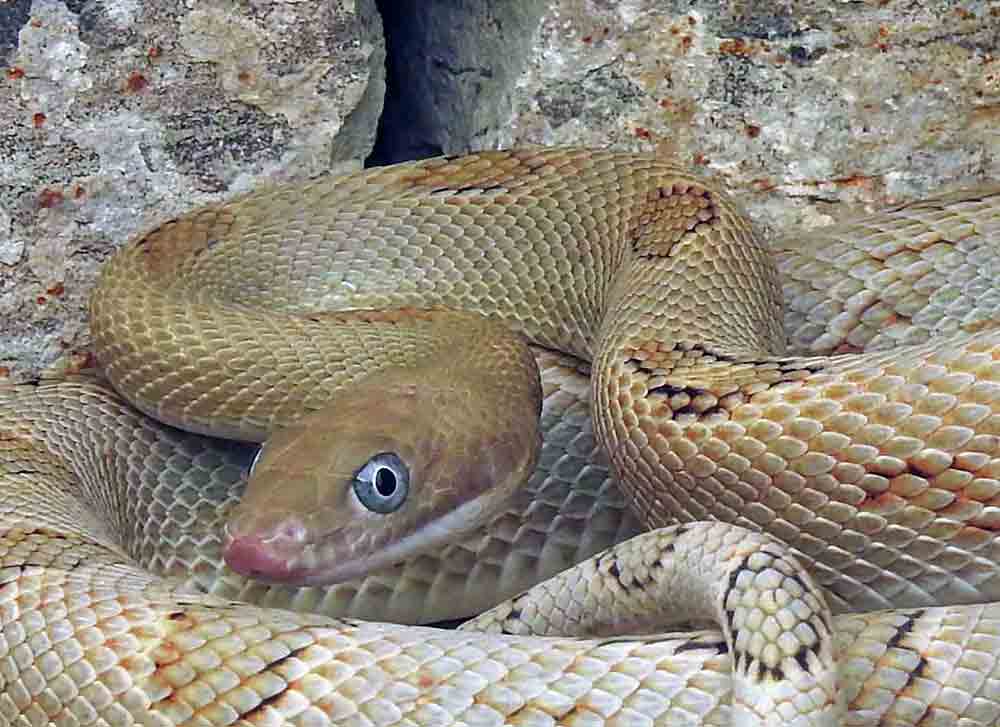
Trans pecos ratsnake. Photo by Dick Bartlett.
A bit of Reptilekeeping History
Foster Reves, REPTILES magazine: Thank you for taking the time to conduct this interview Dick. Please tell us about your early years as they pertained to your interests in reptiles, amphibians, and other wildlife.
Dick Bartlett: My first pet (not counting family dogs) was a Fowler’s toad that dwelt in my sandbox. I was about 4 years old. From that point on I always had a small collection of frogs, toads, and salamanders, most that were native to my neighborhood. I found a small pond replete with water snakes when I was 8 or 9 years old, learning right away they weren’t user friendly. I lived near a small lake that had a great population of snapping turtles, common musk turtles, and bullfrogs. I spent a lot of time watching, listening, and looking for hatchlings and pollywogs. I also had a pet woodchuck, baby skunks (not de-scented), raccoons, a porcupine, and on and on.
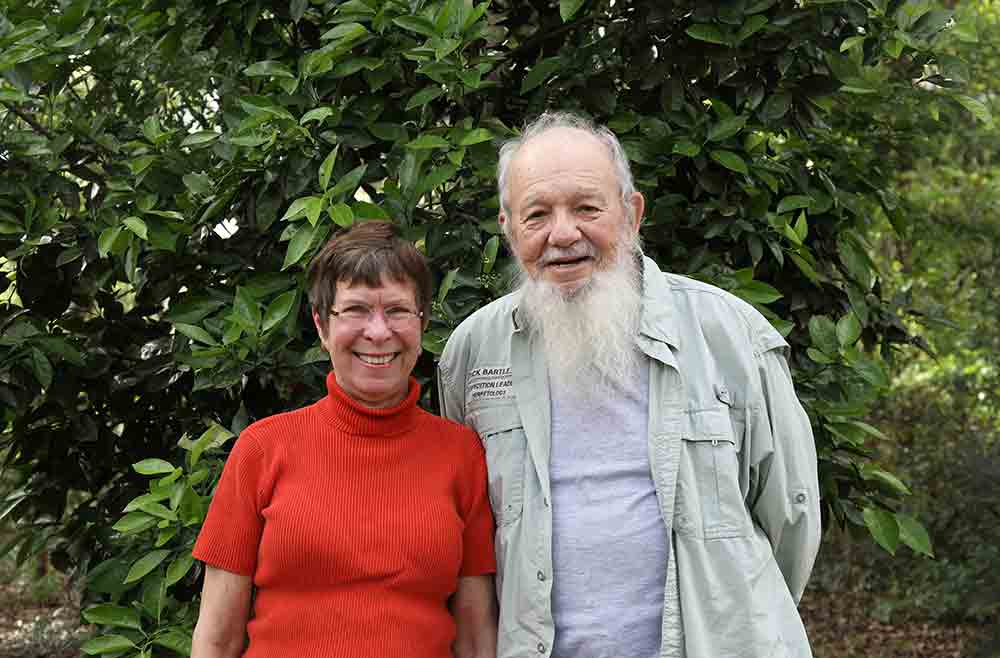
Dick Bartlett and his wife Patti.
FR: Wow that is quite an assortment of childhood pets. Mammals perhaps excluded I think that many, if not most, herpers today can relate to these experiences. What were some of the first species that you kept and bred?
DB: Eastern garter snakes when I was a kid, corn snakes a little later, also northern copperheads and timber rattlers.
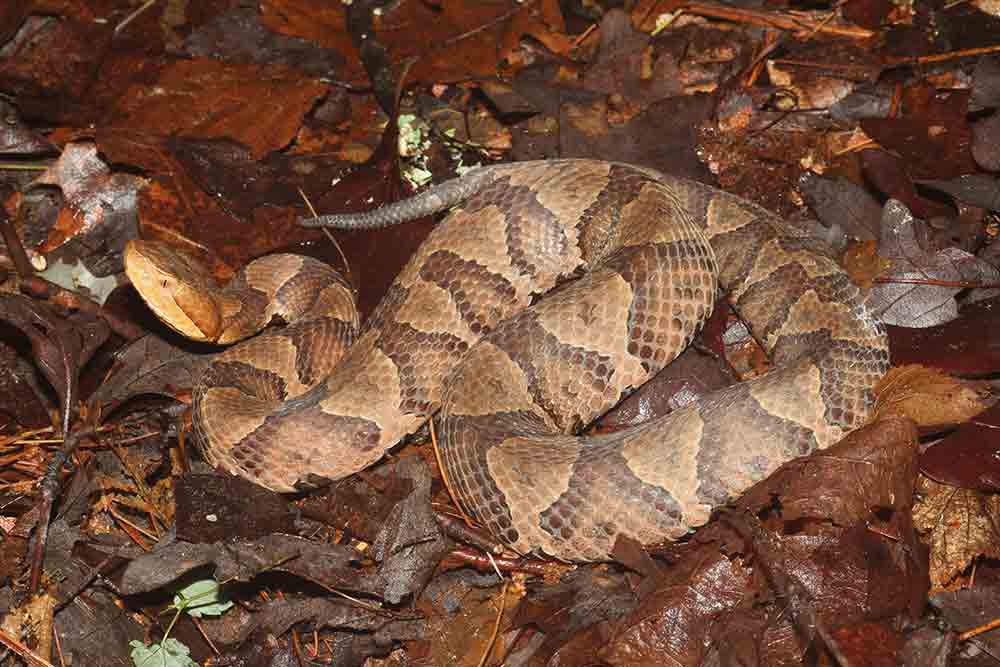
Northern copperhead snake (Agkistrodon contortrix mokasen). Photo by Dick Bartlett.
FR: Did you ever have any trepidation when first working with venomous species?
DB: No. Clifford B. Moore, who was a well-versed and well-known naturalist and director of the Trailside Museum at Forest Park Zoo in my hometown of Springfield, MA was a family friend. Precocious me, with Cliff, I began learning the ins and outs of venomous snake handling when I was about 8 years old. I had no trepidation (nor I guess did my parents) when I began “handling” venomous snakes.
FR: Can you name some favorite species that you have maintained.
DB: So hard to do. We’ve kept and bred over 200 species of herps—snakes, lizards, chelonians, and frogs over the years. I loved ‘em all. I think some favorites were the various Old and New World tree vipers and rattlesnakes.
Here is a short list:
- Snakes: Venomous; I think I enjoyed the various rattlesnakes and arboreal pit vipers the most. No particular favorites among them.
- Nonvenomous: All species of rat snakes and racers were and are my favorites.
- Lizards: Most skinks and Northern water dragons.
- Tortoises: Radiated and Indian star tortoises.
- Anurans: the various South American horned frogs.
- Caudatans: mudpuppies /waterdogs.
FR: As I mentioned in our initial discussion, I can remember as a kid in the early 1970s going into the local pet store and seeing Ouroborus cataphractus selling for $4.99 each. Are there any currently available species that you would like to see breeders focus on before being lost to the hobby?
DB: Colombian horned frogs, sungazers, Amazon Basin emerald tree boas, Timor pythons, and dozens of others.
FR: Many herpers engage in some form of observing animals in their natural habitats. For some this was a natural extension of the hobby and for many others exploring the world of backyards, local parks, forests, creeks and so forth is what lead to working with herps in captivity in the first place. As mentioned above, you are known for your works on field herping as least as much as for your husbandry experiences. Did you have a defining moment early on that made you want to pursue this avenue as aggressively as you do?
DB: No. I’ve been a field observer since childhood and continue to do so today. In addition to herps I have always been into birds to a greater or lesser degree. Last week it was greater. Patti and I flew up to Saz Zim Bog in Meadowlands, MN. Temps were -26 to just above 0 but we were out owl-watching.
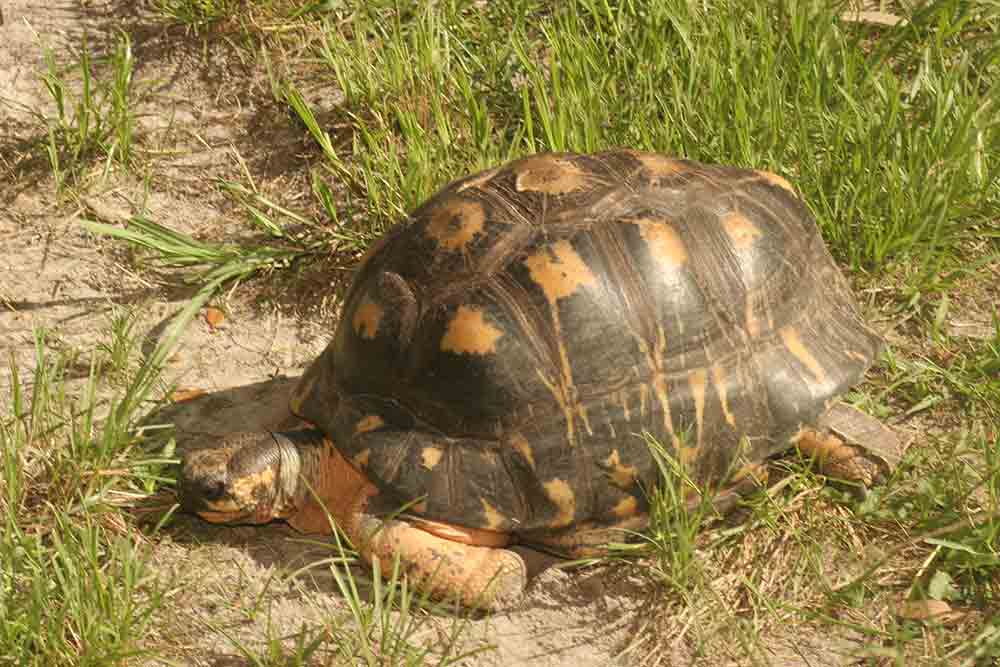
Marty, a radiated tortoise who has been with the Bartlett’s for 55 years.
FR: As any long time field herper can most likely attest to, many species-rich spots from years ago are now developed. What are some of the areas that you have seen most impacted by development?
DB: Living in Florida is horrid. Thousands of acres are being destroyed monthly (probably weekly) to accommodate new residents. Arizona is in the same fix, as is California. It has got to stop somewhere but shows no sign of doing so to date.
FR: In all of your field herping experiences, which moments stand out the most?
DB: Patti and I were herping tour guides in Amazonian Peru for 15+ years. Loved every minute of it. Also finding my first clutch of neonate timber rattlesnakes. Watching sidewinders do their oblique travels across desert sands—and I’m still looking for neonate sidewinders.
FR: What were some of the most difficult species for you to locate in their natural habitat?
DB: Various Amazonian pit vipers, Gray-banded kingsnakes, seemingly the first example of any and all species. But after #1 of each, the subsequent finds seemed easier.
FR: Approximately how much time do you currently spend out in the field?
DB: Old age caught up with me now. Most of my field searches are while driving. But I take nightly drives in good herping weather and usually do two or three cross-country herping trips annually.
FR: What motivated you to start writing?
DB: A fluke. I enjoy sharing knowledge (but not necessarily best herping spots). I simply wrote a monthly herp article for Notes from NOAH for 10+ years. Ditto for the old REPTILES magazine for 15 years, and sporadic articles for TFH Hobbyist. We’ve also written 56 books covering info on single species, multiple species, and 10 field guides on USA and Amazonian herps.
FR: What would you consider to be your most challenging writing project?
DB: The field guides, all published by University Press of Florida.
FR: Tell us about the current book that you are working on.
DB: Rattlesnakes and Rattlesnakin’, A pictorial, identification guide, and adventure guide with co-author, Jake Scott, on every rattlesnake species/subspecies now known.
FR: Do you and Patti have any plans for future writing projects?
DB: At the moment, no. But who knows what the next moment will bring?
FR: One reality of the world now is that due to the internet, less books are being published in print. Have you ever entertained the thought of publishing online?
DB: I’ve thought, but that’s as far as I’ve gotten on this. Neither Patti nor I are computer persons so we keep plugging along with the written word. But I’ve been writing biweekly Blogs for Kingsnake.com for several years and do have a natural history, largely on herps on Facebook under “Dick Bartlett” for over 10 years.
FR: Is there any particular direction that you either foresee or like to see the hobby go in?
DB: Keep and breed herps for their individual interest, not for the money. The latter will assure that species after species will disappear from the hobby.
FR: In addition to reptiles and amphibians, what other areas of interests do you have?
DB: All life forms. We have quail, muntjacs (a small Asian deer) finches, tortoises, and I have interest in virtually all extant creatures—and plants, to a lesser and much less informed degree.
FR: Do you plan on slowing down anytime soon?
DB: Only if health dictates the need.
FR: Thank you so much for taking the time to engage in this interview.
DB: You’re welcome.
A Collection of Dick Bartlett articles on ReptilesMagazine.com
Snakes
Coral Snakes
https://reptilesmagazine.com/coral-snakes/
Antaresia Pythons
https://reptilesmagazine.com/antaresia-pythons/
Herping for Western Garter Snakes
https://reptilesmagazine.com/herping-for-western-garter-snakes/
Kingsnakes Questions Answered
https://reptilesmagazine.com/kingsnakes-2/
Sand And Scrub-dwelling Snake Species
https://reptilesmagazine.com/sand-and-scrub-dwelling-snake-species/
Amphibians
Herping The Pacific Coast Ensatina
https://reptilesmagazine.com/herping-the-pacific-coast-ensatina
Expert Newt Care Tips
https://reptilesmagazine.com/expert-newt-care-tips/
Herping for Frogs in Florida
https://reptilesmagazine.com/herping-for-frogs-in-florida/
Lizards
North American Lizards From The
Sceloporus Genus
https://reptilesmagazine.com/north-american-lizards-from-the-sceloporus-genus/
How To Find And Collect Swifts And Spiny Lizards
https://reptilesmagazine.com/how-to-find-and-collect-swifts-and-spiny-lizards/
American Geckos
https://reptilesmagazine.com/american-geckos/
Turtles
Expert Tips On Keeping The Narrow-Bridged Musk Turtle
https://reptilesmagazine.com/expert-tips-on-keeping-the-narrow-bridged-musk-turtle/
Reptiles And Amphibians Of Mexico
https://reptilesmagazine.com/reptiles-and-amphibians-of-mexico/

